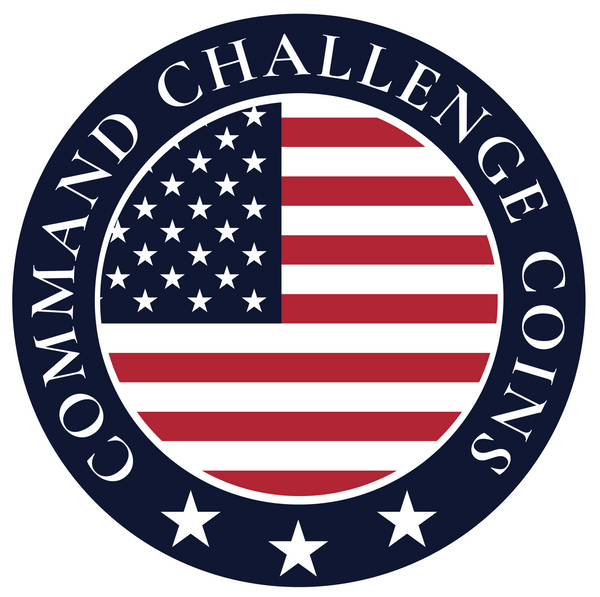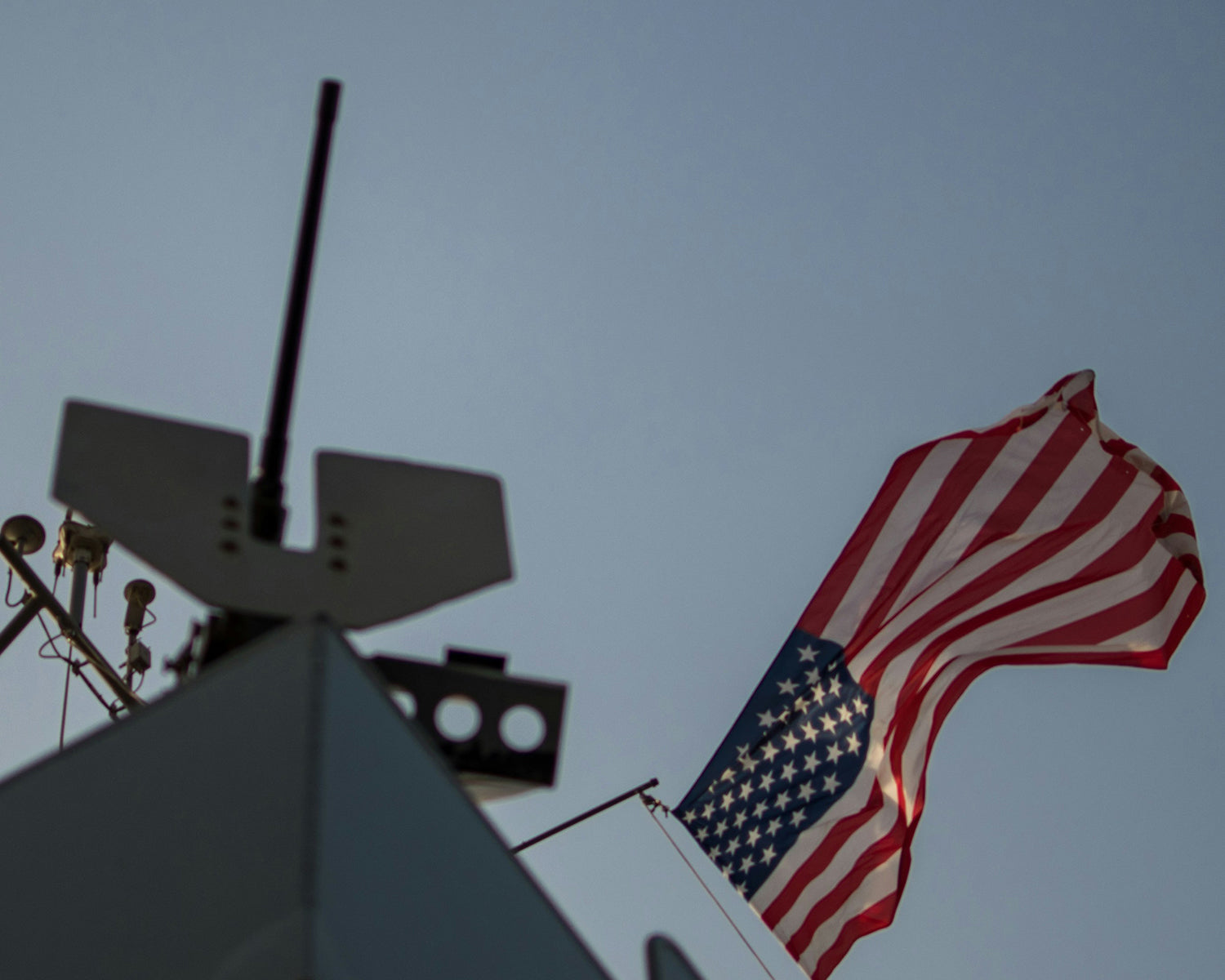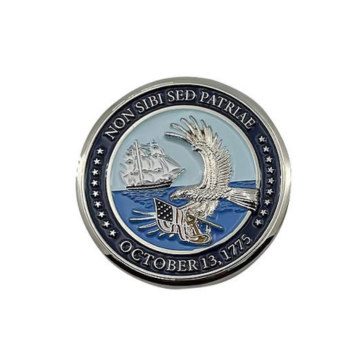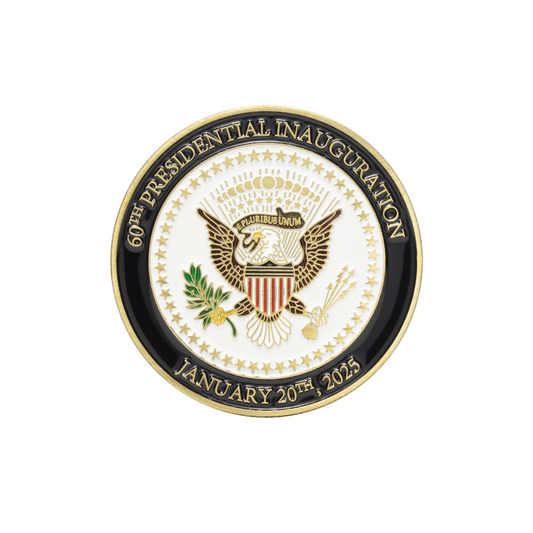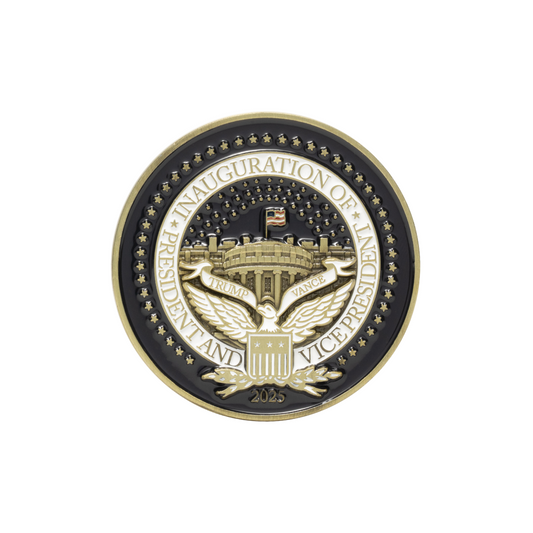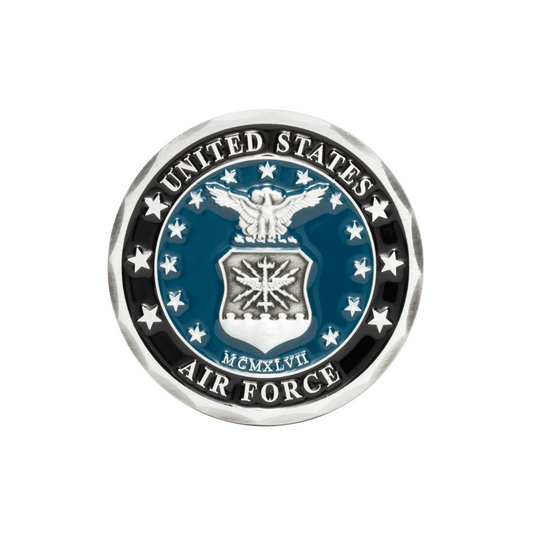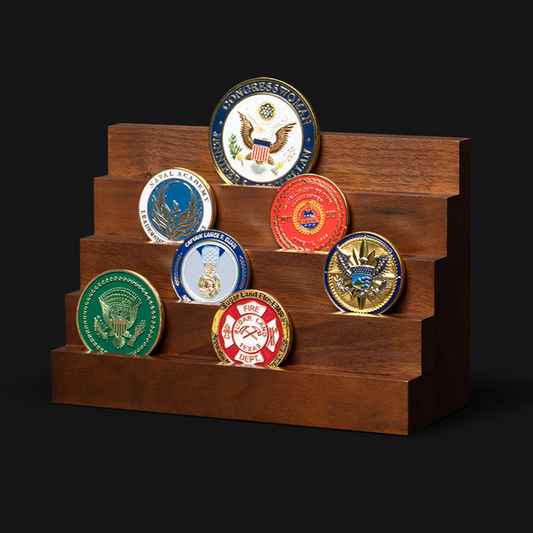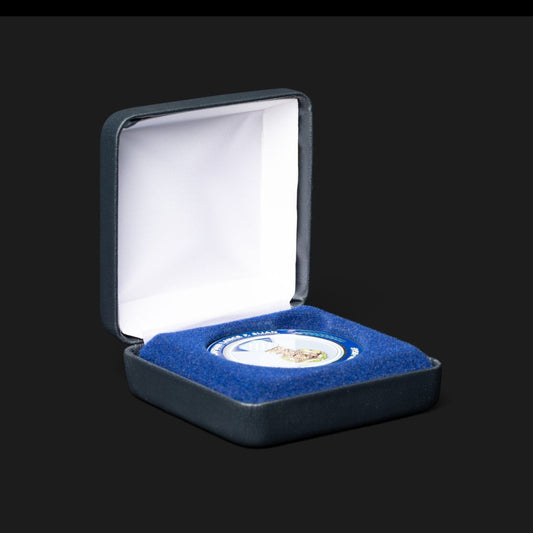
Coins For America 250th Anniversary Can Innovate Nonprofit And Museum Sponsor
Renita WingfieldKey Takeaways
-
Commemorative coins tied to America’s 250th anniversary create a powerful emotional link between supporters and the mission they fund.
-
Traditional donor gifts often lack meaning, while well-crafted coins give sponsors something they feel proud to display and talk about.
-
These coins reinforce donor loyalty by turning gratitude into something tangible that sparks long-term connection and visibility.
-
A thoughtfully designed coin elevates the supporter experience, helping nonprofits and museums stand out amid heavy fundraising activity during the 250th year.
- Quality coins grounded in historical symbolism appeal to both long-time patrons and younger supporters who want experiences with purpose.
Commemorative coins marking America’s 250th anniversary hold surprising power for nonprofits and museums. When crafted with care and historical meaning, a simple coin transforms into a catalyst for deeper donor relationships and renewed enthusiasm among supporters. At a time when fundraising appeals blur together and donor fatigue runs high, tangible tokens of appreciation can cut through the noise by directly connecting supporters to the heritage they cherish. Our perspective, rooted in military tradition, has long recognized that a quality coin is more than a keepsake – it’s a bridge between patriotic history and active support, turning a milestone celebration into a movement of generosity.
America’s 250th brings unique opportunities to connect with supporters
The United States Semiquincentennial in 2026 offers more than a one-day celebration – it creates a season of reflection and patriotism that nonprofits and museums can use to inspire giving. Communities nationwide are gearing up to commemorate 250 years of American history through events, educational programs, and memorial projects. This historic milestone naturally draws attention to heritage and legacy, giving organizations a rare chance to align their mission with a moment of national pride. Supporters are primed to listen when your anniversary story ties into our shared American journey.
That said, the sheer scale of semiquincentennial festivities means donors will see countless appeals, and it’s easy for enthusiasm to get diluted. Many groups will roll out fundraising campaigns for anniversary events, which could lead to sponsor fatigue if every ask feels the same. Traditional thank-yous or generic giveaway items risk blending into the background when supporter attention is at a premium. Nonprofits need an angle that both honors the gravity of the 250th and stands out as fresh and heartfelt. Commemorative coins hit that sweet spot. These keepsakes carry intrinsic meaning and perceived value – and history proves their impact. Since 1982 the U.S. Mint’s commemorative coin programs have raised over $500 million for museums, monuments, and other cultural causes. Clearly, a well-designed coin can turn a fleeting anniversary into a lasting source of funding and engagement.
Sponsors and donors crave meaningful recognition

Donors see through token gestures
Simply putting a donor’s name on a plaque or sending a generic mug isn’t enough to spark genuine excitement. Supporters can tell when a thank-you is perfunctory versus personal. A disappointing number of corporate gifts end up discarded – roughly 40% are tossed immediately and about 66% of promotional items eventually land in the trash. This happens when gifts lack relevance or emotional value to the recipient. Donors today want more than a pat on the back; they want to feel a real connection to the cause they support.
Appreciation is a strategic advantage
Recognizing sponsors and donors in a heartfelt way is not just courteous, it directly influences their ongoing support. When people feel genuinely appreciated by an organization, they tend to stick around and even increase their involvement. Research shows that donors who feel valued give nearly 40% more over their lifetime and are retained at significantly higher rates. In other words, meaningful recognition pays off. A thoughtfully crafted token of appreciation can turn a one-time contributor into a loyal advocate who continues giving year after year.
Quality and meaning over novelty
The key is to offer recognition that resonates, not just something novel for novelty’s sake. A high-quality item tied to an organization’s mission will outshine a gimmick that has no deeper significance. Supporters equate the quality of a gift with the esteem in which they’re held – a well-made commemorative piece shows that the organization truly honors their contribution. It’s not about the monetary value of a reward, but the meaning behind it. A beautifully designed item that reflects the cause’s values makes donors feel seen and appreciated on a personal level.
Tying recognition to the cause
The most impactful thank-you tokens are those that let donors see their own role in the story of the cause. If recognition is linked to the organization’s mission or a historical theme like America’s 250th, it carries much greater weight. Sponsors love feeling that they are part of something bigger – a shared legacy or movement – rather than just receiving a generic thank-you. By giving supporters an item that symbolizes the impact of their support, you invite them into the narrative of your mission. This sense of shared purpose deepens their emotional investment and makes the recognition unforgettable.
Commemorative coins offer tangible value and emotional impact
Unlike a certificate that might be filed away or an email that gets deleted, a commemorative coin is a physical keepsake that a supporter can hold and display. It brings the weight of the cause into the palm of their hand. The coin’s very material – often a hefty metal with embossed designs – conveys significance. Recipients instinctively recognize that this is not a throwaway trinket but a token meant to last. A well-crafted commemorative coin becomes a tactile reminder of the mission that outlasts fleeting gestures like digital thank-yous. Every time a donor or sponsor sees or touches it, they are reminded of the organization’s gratitude and the heritage being celebrated.
These coins also carry emotional resonance that far exceeds their size. Through custom imagery and inscriptions, they tell a story about the milestone and the supporter’s part in it. For America’s 250th, a coin might feature symbols of liberty or historical icons that stir pride in our shared legacy. Holding such a piece can give a donor a sense of personal connection to that history – a feeling that “I am part of this moment.” That emotional impact turns the coin into more than a memento; it becomes an emblem of the donor’s bond with the cause. Because it feels special, supporters often show it off or talk about it with others, spreading awareness organically. And from a practical standpoint, commemorative coins offer value back to supporters – they’re collectible items that could even appreciate over time or become cherished family keepsakes. This blend of tangible value and heartfelt meaning makes coins uniquely effective in deepening supporter engagement.
“Commemorative coins hit that sweet spot. These keepsakes carry intrinsic meaning and perceived value.”
Coins turn supporters into proud ambassadors

Commemorative coins don’t just please your current donors – they can turn those donors into enthusiastic ambassadors for your mission. When someone receives a unique token of appreciation, they naturally want to show it and share the story behind it. In the corporate world, for instance, 83% of customers feel more loyal to a brand after receiving a promotional gift, and 85% remember the giver’s name. Supporters of nonprofits respond the same way: a donor who’s been honored with a beautiful coin is more likely to spread the word about your cause and remember your organization fondly long after the anniversary is over.
-
Conversation starter: A challenge coin displayed on a desk or carried in a pocket is a magnet for questions. When friends or colleagues notice it, the proud supporter has a perfect opening to explain what the coin represents – sparking conversations about your organization and the 250th anniversary event.
-
Badge of honor: Receiving a limited-edition coin makes donors feel like valued insiders. It’s a badge of honor they can physically hold, reinforcing their personal connection to the cause. This pride often translates into eagerness to tell others that they helped make a difference.
-
Word-of-mouth marketing: Proud coin holders become unofficial marketers for your nonprofit. They show the coin to friends and family as a prop to share the story behind it. Each retelling spreads awareness and enthusiasm for your mission.
-
Social media moments: In today’s sharing culture, a visually striking commemorative coin can end up on social media. Donors might post a photo of the coin or an “unboxing” of their donor gift, broadcasting their support to friends and followers. This kind of authentic, peer-to-peer promotion extends your reach to new audiences.
-
Legacy and collection: Because these coins are keepsakes, supporters tend to keep them on display at home or in the office for years. Visitors who see a commemorative coin on a shelf may ask about it, giving the donor another chance to act as an advocate for your museum or nonprofit. Over time, as part of the donor’s personal legacy, the coin can even be passed to the next generation along with the story of supporting your organization.
All of these scenarios turn a one-time donor recognition into ongoing promotion. Instead of fading after the fundraising campaign ends, the coin keeps the cause alive in daily life. Each supporter-turned-ambassador carries your message into their community, proudly linking others back to your mission. This multiplier effect is how a single token of appreciation can attract new donors, inspire volunteer participation, and generally expand the circle of support well beyond the initial group of sponsors.
Honoring history while engaging new generations of supporters

A 250th anniversary naturally emphasizes looking back, but it’s also an opportunity to bring new faces into the fold. Nonprofits and museums have to balance tradition with innovation to resonate across age groups. Long-time supporters and history enthusiasts will be moved by the faithful homage a commemorative coin pays to American heritage. At the same time, younger donors – Millennials, Gen Z, and even students – need to feel that this celebration speaks to their contemporary values and interests. A well-thought-out commemorative coin can bridge this generation gap. It anchors your outreach in authenticity and historical respect (which older patrons love) while offering a tangible, shareable experience that younger supporters find novel and engaging.
“A well-crafted commemorative coin becomes a tactile reminder of the mission that outlasts fleeting gestures like digital thank-yous.”
To capture new generations, the key is to infuse fresh creativity into the classic coin concept. For example, organizations might involve young people in the coin design process or crowdsource ideas for symbols that represent “America 250” to them. This gives young participants a sense of ownership and excitement about the end result. The coin itself can be presented in a modern context – perhaps as part of an interactive exhibit, a digital scavenger hunt, or a social media challenge – so that tech-savvy audiences encounter it as more than just an object under glass. Today’s youth value experiences and authenticity, so they’re likely to embrace a commemorative coin if it comes with a compelling story or interactive element. When a teenager can hold a coin and hear the narrative of what it signifies (either from a museum guide or via a QR code linking to a video), history comes alive in a personal way. By uniting a timeless token of appreciation with creative engagement strategies, nonprofits ensure that honoring 250 years of history also plants the seeds of future support among the next generation.
Command Challenge Coins Bridges Tradition and Support
Carrying forward that blend of tradition and innovation is at the heart of Command Challenge Coins’ approach. As artisans rooted in military and public service heritage, we understand how to craft coins that honor history while engaging people today. Our team has spent years designing custom challenge coins for units, agencies, and organizations that demand both precision and meaning. We pour that same dedication into each commemorative piece for nonprofits and museums. We ensure that the final product isn’t just visually striking, but rich with meaningful symbols and quality that resonate with supporters across generations.
We believe that a commemorative coin should tell a story in metal. That’s why we collaborate closely with organizations to capture their mission, values, and the essence of the America 250 celebration in every design element. From initial concept to final minting, our focus remains on creating a timeless token that sponsors and donors will be proud to receive. The result is more than a souvenir; it’s a symbol of honor and gratitude that reinforces the bond between your supporters and your cause. With an unwavering commitment to craftsmanship and legacy, our coins aim to galvanize modern support by uniting patriotic tradition with fresh fundraising creativity, fully aligning with the spirit of the semiquincentennial celebration.
Common questions
Organizations preparing a commemorative coin campaign for America’s 250th anniversary often have a few practical questions. How can these coins be used effectively to boost fundraising? What should go on the coin to make it truly special? Below we answer some frequent queries to help you make the most of sponsor coins in your donor engagement efforts.
How can we use sponsor coins for America’s 250th anniversary fundraising?
Sponsor coins can be integrated into your fundraising strategy in several creative ways. Many nonprofits offer a commemorative coin as a premium thank-you gift for donors who contribute at or above a certain level during the anniversary campaign. You might also sell limited-edition 250th anniversary coins directly to supporters and collectors, with proceeds going to your cause. Coins can be used as incentives in crowdfunding drives, gala auctions, or membership sign-ups as well – the key is to position the coin as an exclusive keepsake that donors receive in return for helping you reach a fundraising goal. Tying the coin to a specific campaign (for example, “Donate $250 for 250 years and receive an exclusive coin”) creates a tangible reward that motivates generosity while celebrating the milestone simultaneously.
What wording or design works best on a donor coin?
The wording on a donor coin should be concise, meaningful, and tied to the celebration. Typically, one side of the coin features the name or logo of the event or organization along with the “America 250” theme (for instance, the dates 1776–2026 or an official semiquincentennial logo). The other side can carry an inspirational motto or message of appreciation – something like “Honoring 250 Years – Thanks to Our Supporters” or a short tagline that connects your mission to the anniversary. In terms of design, incorporate imagery that resonates with your cause and the patriotic theme: this could be a historic landmark, an icon like the Liberty Bell or American flag, or artwork related to your museum’s collection. The best designs are uncluttered and striking, so choose a few key elements (text, date, symbol) that will stand out. Remember, the goal is for the coin to immediately remind the holder of the milestone and their valued role in making it possible.
Is it better to sell commemorative coins or give them as donor gifts?
It depends on your goals. Many organizations do both. Giving coins as donor gifts (for example, to sponsors or major donors) adds a personal touch and shows appreciation, which can strengthen those key relationships. On the other hand, selling commemorative coins to the general supporter base or at events can bring in additional funds and allow more people to participate in the celebration. You might offer an exclusive version of the coin as a gift for top donors, while having a slightly different design available for sale to everyone else. This way, you reward your biggest supporters with a special honor, but still use coins broadly as a fundraising tool. The right approach will balance raising revenue with making donors feel valued.
How can commemorative coins appeal to younger supporters?
The key to appealing to younger supporters is to make the coin relevant and fun for them. Start with a design that feels fresh. Use bold graphics or meaningful symbols that align with current interests (for instance, if your cause involves nature, a modern stylized eagle or tree might resonate). You can also tie the coin to an interactive element. For example, include a QR code on the packaging that leads to a short video, or create a social media challenge where young donors share photos with their coins. Emphasize the story behind the coin when marketing it to youth; explain why the 250th anniversary matters and how their generation’s involvement carries that legacy forward. Lastly, ensure the coin feels like a quality item (young people appreciate well-made products) and consider eco-friendly packaging, as younger audiences tend to value sustainability in any campaign.
How much does it cost to create a custom commemorative coin?
The cost can vary widely depending on the coin’s size, material, color, and the quantity you order. In general, producing custom coins is quite affordable for nonprofits, especially when ordering in bulk. For example, a 2-inch metal coin with colored enamel might cost only a few dollars per coin when you order a few hundred. There may be one-time costs for designing and mold setup, but after that, the per-coin price drops with larger quantities. It’s a good idea to request quotes from reputable coin makers with your specific design in mind – you’ll likely find that the investment is reasonable, and the perceived value to supporters is much higher than the production cost.
These frequently asked questions highlight the versatility of commemorative coins in a 250th anniversary campaign. With thoughtful design and strategy, a single coin can serve as a fundraising tool, a token of appreciation, and a conversation piece that keeps your cause in the spotlight. The key is to align the coin’s purpose with your organization’s goals. When done right, the end result is a cherished symbol of heritage that inspires pride and continued support long after the anniversary year.
